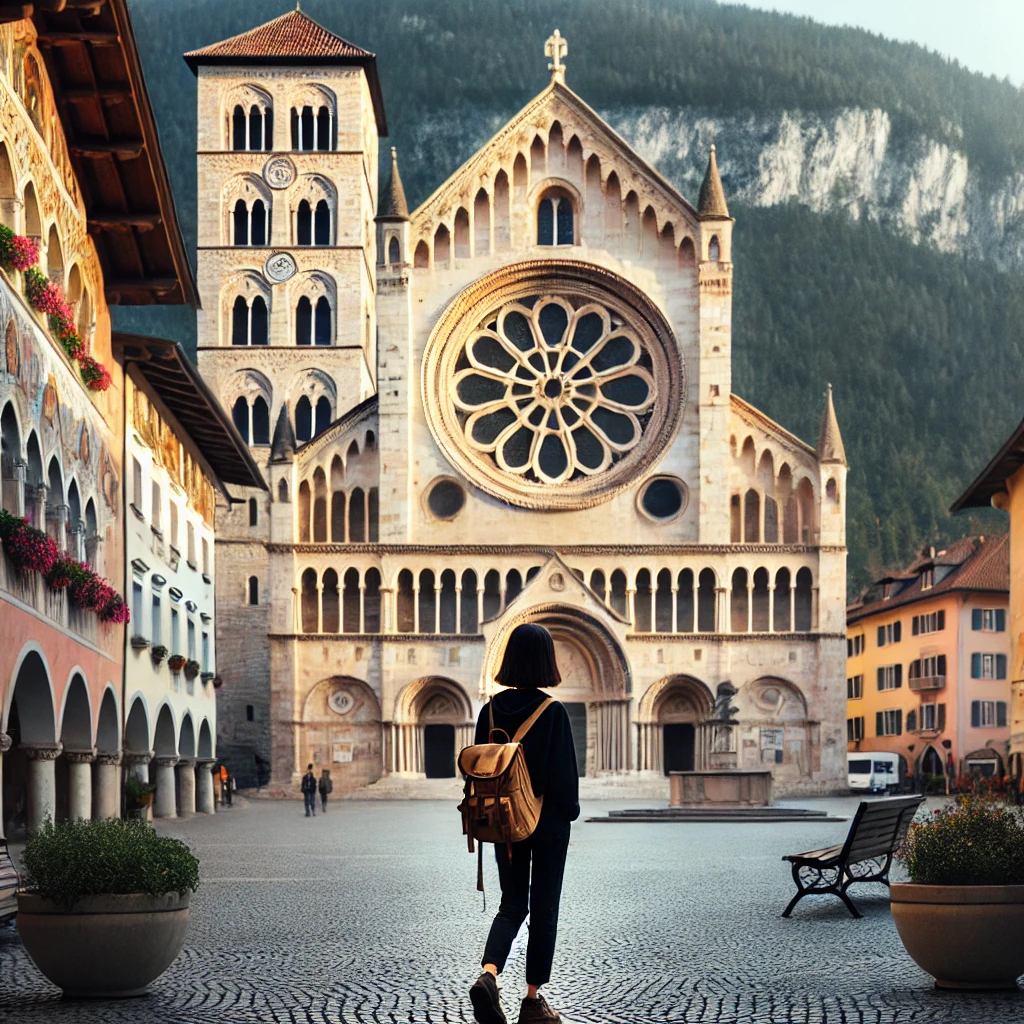ChatGPT:
Trento, Italy is the capital city of the autonomous province of Trentino, located in the northern region of Trentino-Alto Adige/Südtirol. Nestled in the Adige River Valley and surrounded by the Dolomites and Alpine mountains, it boasts a rich blend of Italian and Austrian influences, reflected in its history, culture, and architecture.
Origin and Early History
Trento’s origins date back to prehistoric times, but it became more prominent during the Roman era. The Romans founded Tridentum in the 1st century BC, strategically located along the road that connected the Po Valley to the Brenner Pass, leading to modern-day Austria and Germany. This location made Trento a key point in trade and military movements. Roman ruins, such as parts of the ancient city walls, can still be seen today.
Medieval and Renaissance History
During the early Middle Ages, Trento was under the rule of the Lombards and later the Holy Roman Empire. In 1027, Emperor Conrad II granted the city autonomy under the control of the Prince-Bishops, establishing the Prince-Bishopric of Trento, a powerful ecclesiastical principality that lasted until the 18th century.
One of the most pivotal moments in Trento’s history was the Council of Trent (1545-1563). This Catholic ecumenical council, held in the wake of the Protestant Reformation, shaped the Counter-Reformation and had a profound impact on Catholicism in Europe. Trento’s name became synonymous with the council, cementing its historical importance.
Geography and Development
Trento lies in the Adige Valley, one of the largest valleys in the Alps, and is surrounded by the Dolomites to the east and other Alpine ranges to the west. The Adige River, Italy’s second-longest river, runs through the city, contributing to its fertile lands and making it an important agricultural hub, especially for wine and fruit production.
Trento’s geographical position at the crossroads of Mediterranean and Central European influences contributed to its cultural and economic development. The city’s economy has traditionally been based on agriculture, but it has diversified over the centuries to include manufacturing, research, and tourism.
Modern Era and Today
After the fall of the Napoleonic Empire in 1815, Trento became part of the Austrian Empire and later the Austro-Hungarian Empire. It remained under Austrian control until 1918, when, after World War I, it was annexed to Italy, along with the entire region of Trentino-South Tyrol.
Today, Trento is a vibrant city known for its high quality of life, historical architecture, and academic institutions, including the University of Trento, which has gained a reputation for excellence in research and education. The city’s historical center is characterized by Renaissance buildings, frescoed facades, and the 13th-century Castello del Buonconsiglio, the residence of the Prince-Bishops.
Cultural and Economic Development
Trento has a strong tradition of autonomy and has benefited from being part of the Autonomous Province of Trentino, giving it control over local governance and finances. It has become a center for conferences, scientific research, and tourism, attracting visitors interested in its history, alpine scenery, and winter sports.
Culturally, Trento celebrates its unique blend of Italian and Germanic influences, hosting events that range from classical music festivals to historical reenactments of the Council of Trent.
Summary
Trento is a city where history, culture, and natural beauty converge. From its Roman origins and the significant role of the Council of Trent, to its modern status as an educational and cultural hub, Trento continues to thrive at the crossroads of Italy and Central Europe, shaped by its Alpine geography and rich historical legacy.
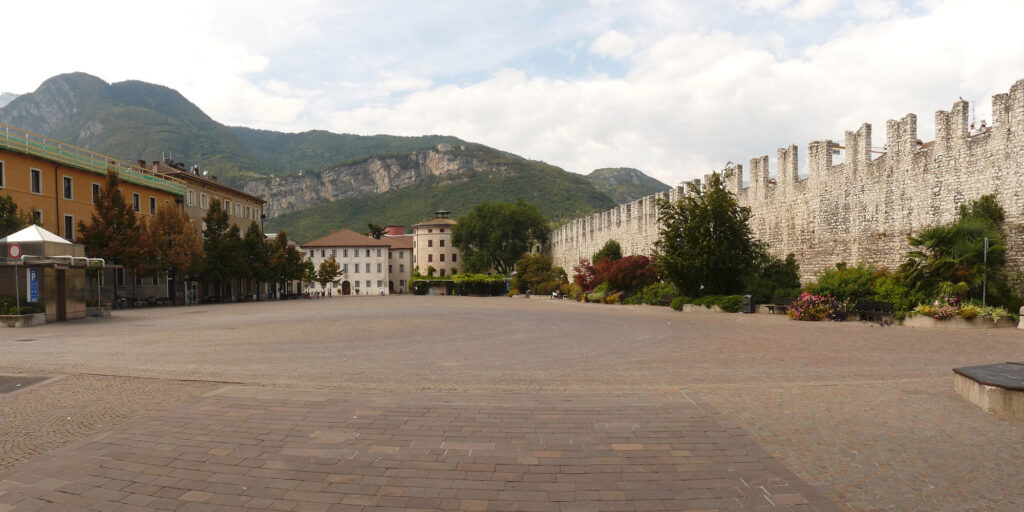
Trento offers a rich collection of historical monuments and tourist attractions that reflect its long history and diverse cultural influences. Below is a list of some of the most important landmarks and sights to visit:
1. Castello del Buonconsiglio
This 13th-century castle is the most significant historical monument in Trento. Once the residence of the Prince-Bishops, it houses an important art collection, including frescoes, sculptures, and medieval artifacts. The Torre Aquila features the famous Cycle of the Months frescoes, which depict medieval life and are considered a masterpiece of Gothic art.
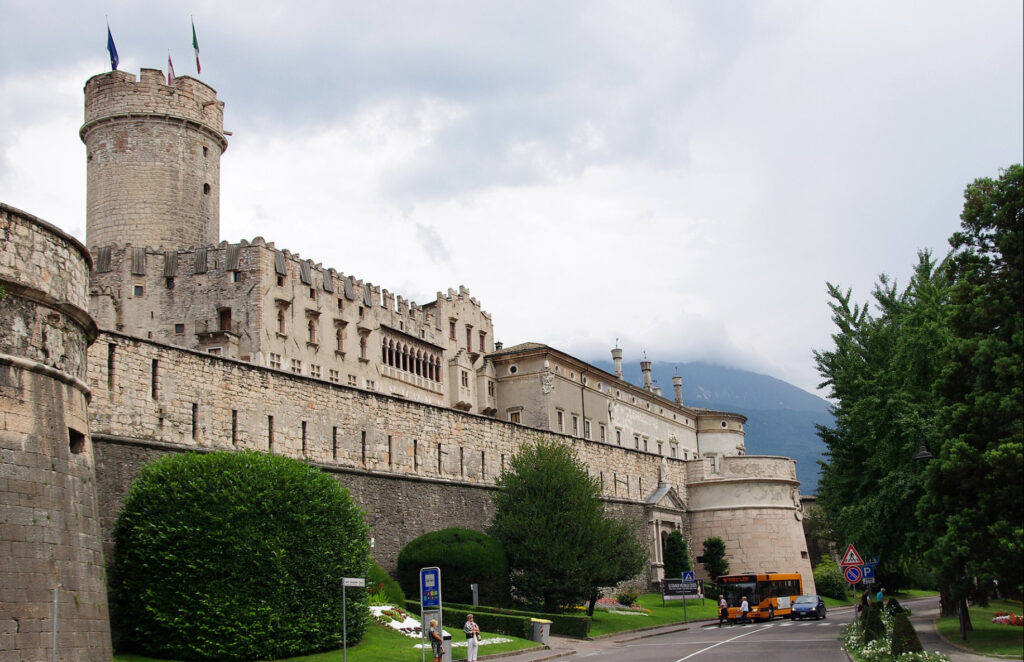
2. Piazza Duomo
The main square of Trento is a lively and picturesque area surrounded by historical buildings. The Fontana del Nettuno (Neptune’s Fountain), located in the center of the square, is a Baroque fountain built in the 18th century. Surrounding the square are some of the city’s most important buildings:
• Cattedrale di San Vigilio (Trento Cathedral): A Romanesque-Gothic cathedral built in the 12th century, it was the site of the Council of Trent and features impressive frescoes and a beautiful rose window.
• Palazzo Pretorio: A medieval building that now houses the Diocesan Museum of Trento, displaying religious art and artifacts.
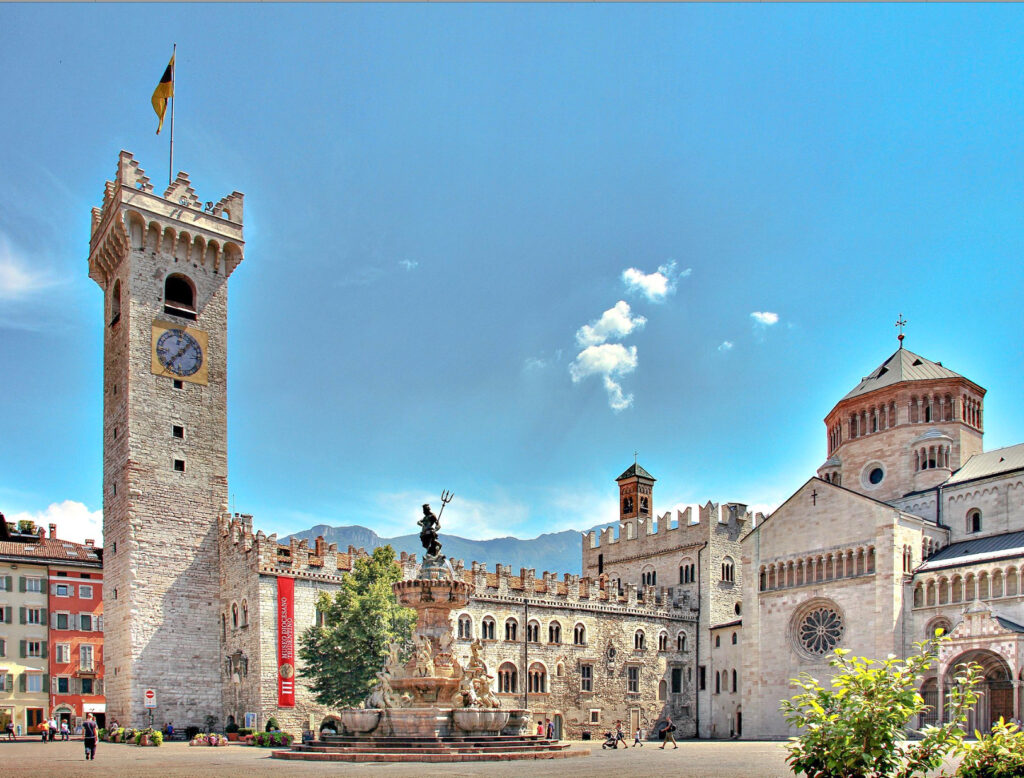
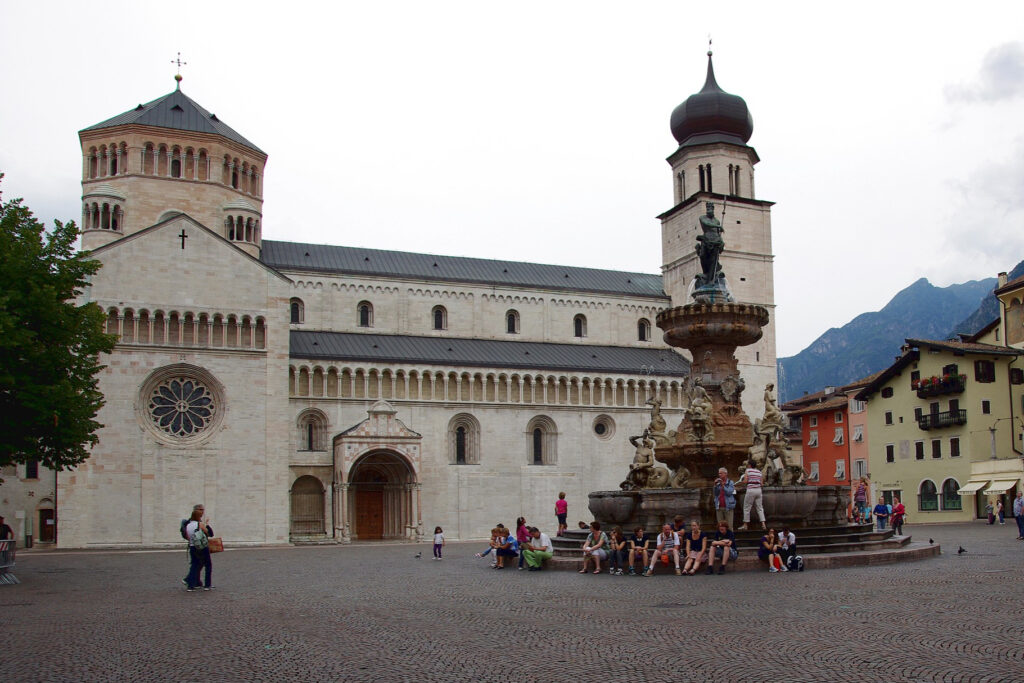
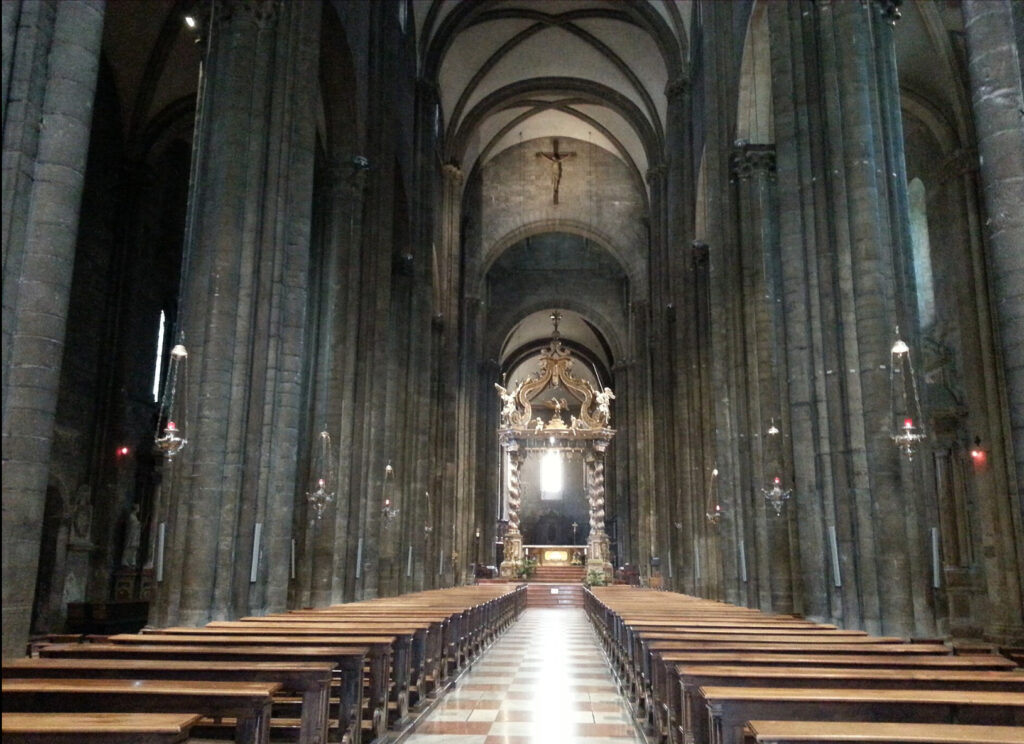
3. Church of Santa Maria Maggiore
This Renaissance-style church, built in the 16th century, is where the Council of Trent began its meetings. Its simple exterior contrasts with the richly decorated interior, including frescoes and statues. The church is an important symbol of Trento’s role in the Counter-Reformation.
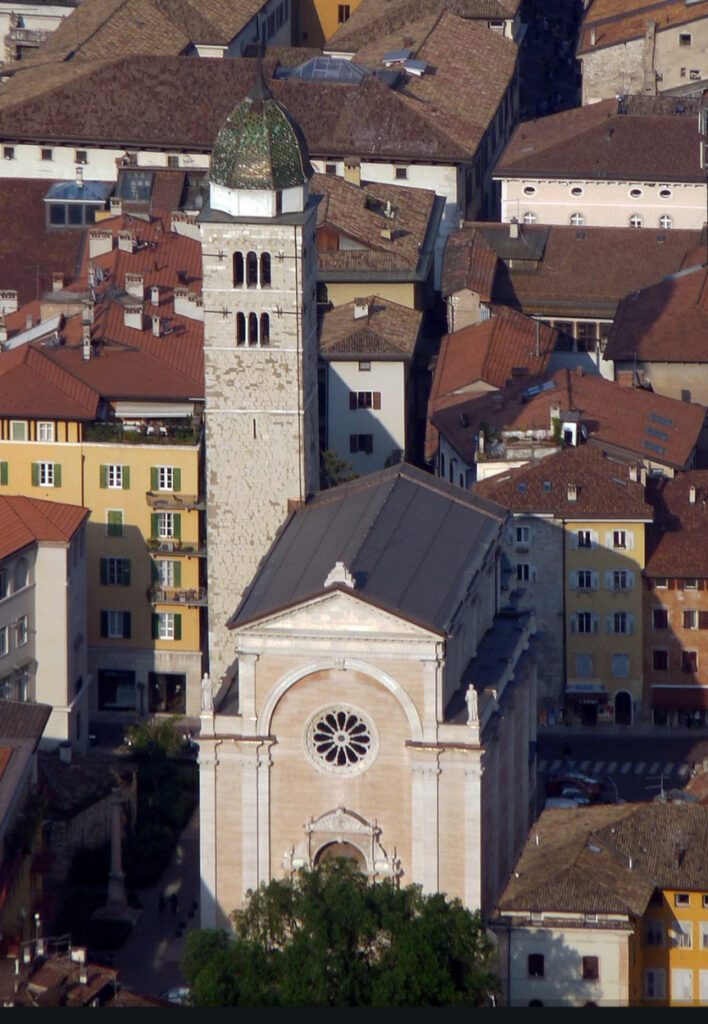
4. Torre Vanga
A medieval defensive tower built in the 13th century, Torre Vanga was once part of the city’s fortifications and has served various roles over the centuries. Today, it is a cultural venue used for temporary exhibitions and events.
5. Muse – Museo delle Scienze
Designed by architect Renzo Piano, Muse is Trento’s modern science museum, focusing on natural history, technology, and sustainability. The museum’s interactive exhibits make it a family-friendly attraction, and it is set against the backdrop of the Alps, adding to its visual appeal.
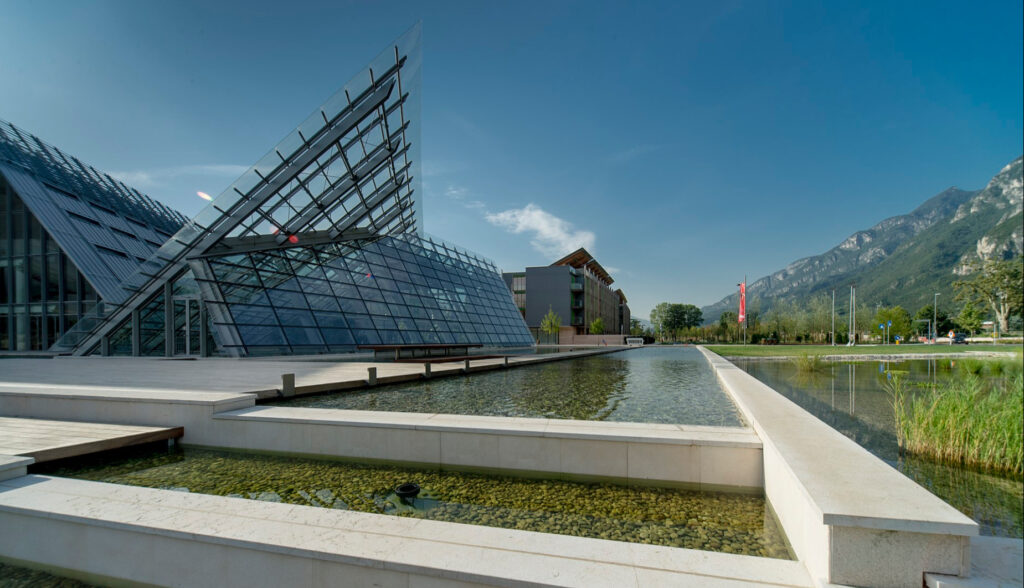
6. Roman Tridentum
Beneath the city’s surface lie the ancient Roman remains of Tridentum, which can be explored through archaeological sites. Visitors can walk through the remains of Roman streets, houses, and mosaics in an underground museum called S.A.S.S. – Spazio Archeologico Sotterraneo del Sas.
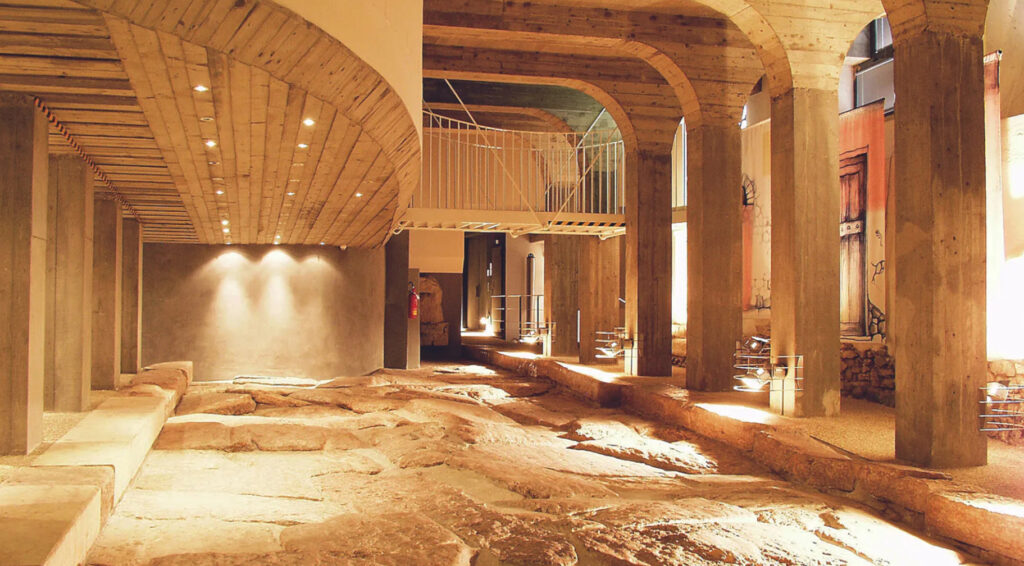
7. Palazzo delle Albere
A 16th-century Renaissance villa that once belonged to the Madruzzo family, who were influential figures during the time of the Prince-Bishops. Today, the palace hosts temporary exhibitions and is closely linked with the nearby Muse.
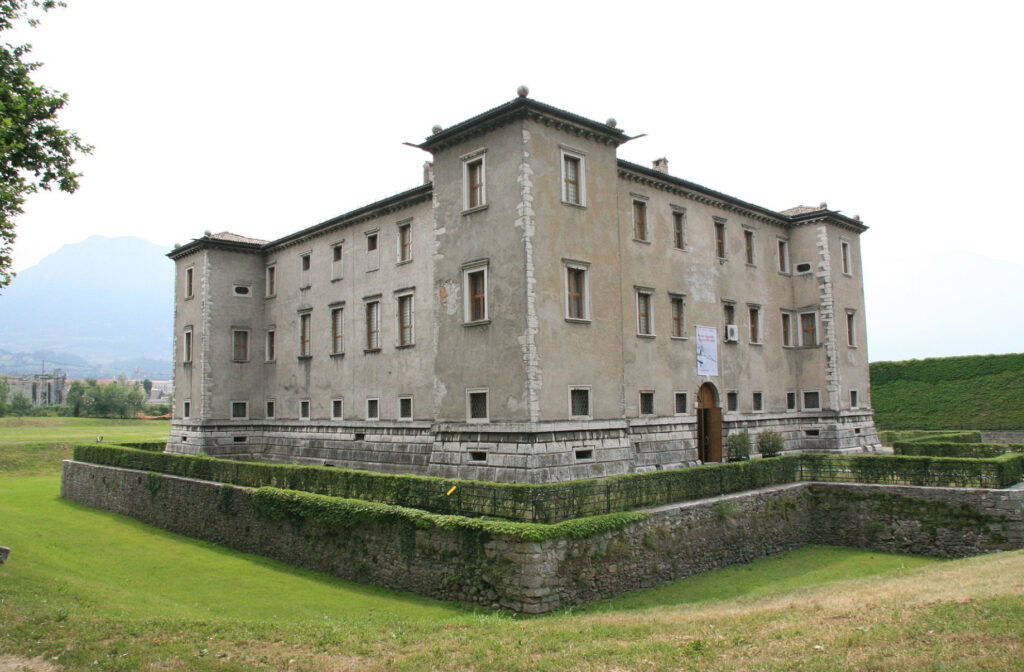
8. Doss Trento
A hill on the west side of the city offering panoramic views of Trento and the surrounding mountains. At the top, you’ll find the Mausoleum of Cesare Battisti, a memorial to the Italian patriot who fought for the unification of Italy and was executed during World War I.
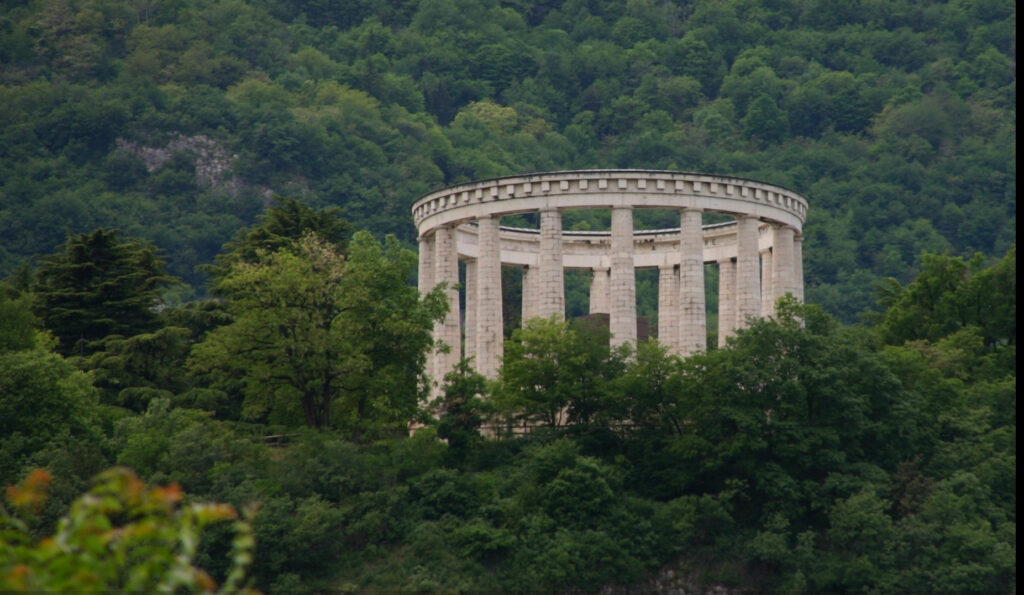
9. Sardagna Cable Car
The Sardagna Cable Car takes visitors from the city center up to the village of Sardagna, offering stunning views of Trento and the Adige River Valley. It’s a popular option for those looking to enjoy the scenic landscape around the city.
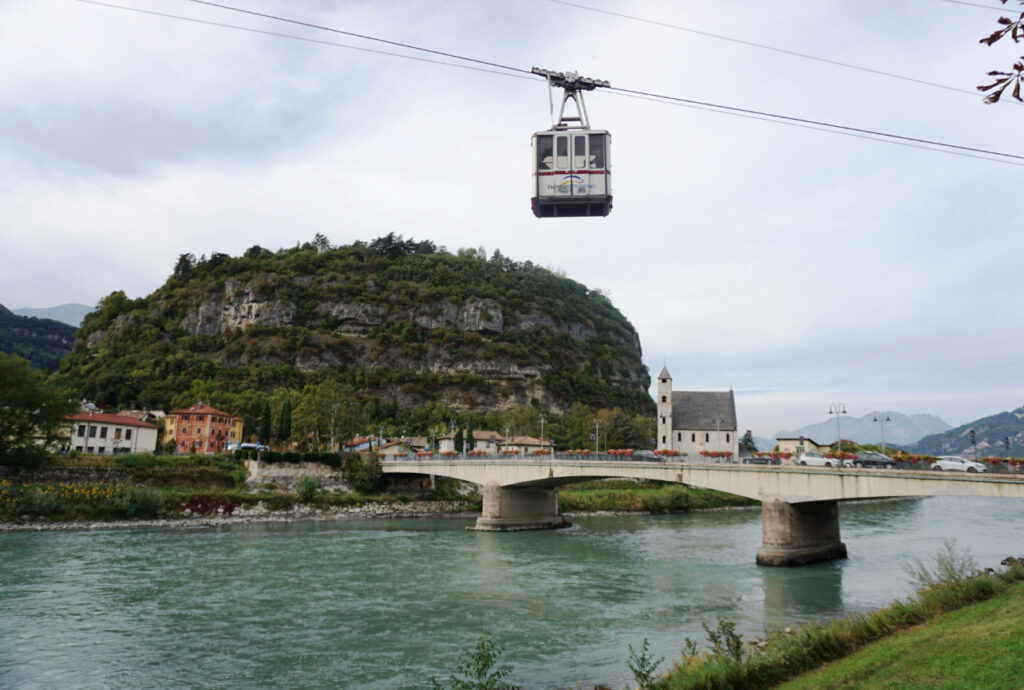
10. Palazzo Geremia
An elegant Renaissance palace located in the city center, Palazzo Geremia is known for its beautifully frescoed facade and interior. The palace now serves as a venue for civic events and temporary exhibitions.
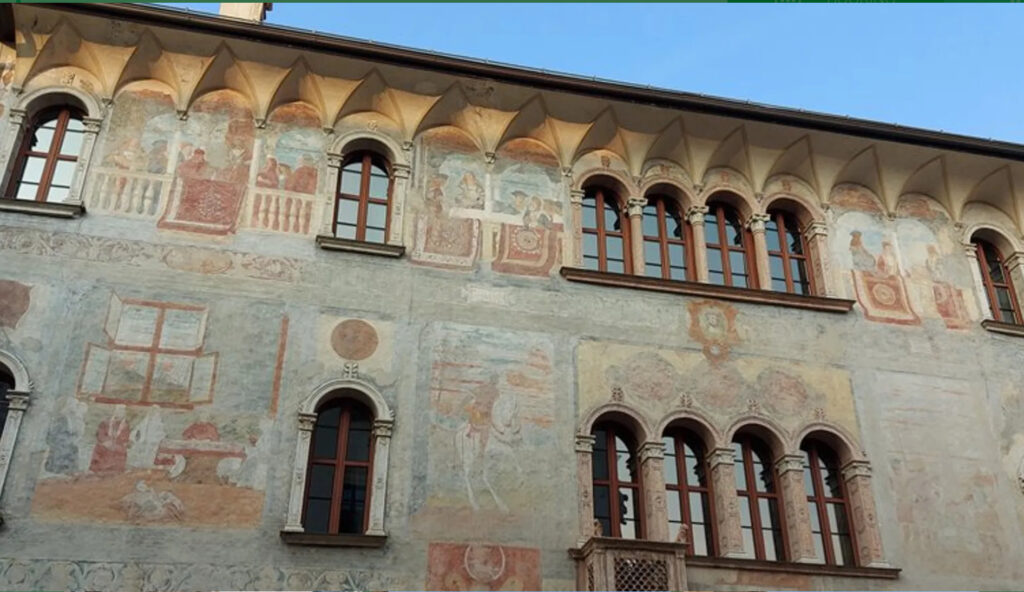
11. Trento Civic Tower
This iconic clock tower, located next to the cathedral in Piazza Duomo, dates back to medieval times. Climbing the tower offers a rewarding view of the city’s rooftops and the surrounding mountains.
12. Museo Diocesano Tridentino
Located in Palazzo Pretorio, this museum provides a comprehensive look at Trento’s religious and artistic history. Its collection includes paintings, sculptures, manuscripts, and liturgical objects dating back to the medieval period.
13. Monte Bondone
Although not a monument, Monte Bondone is one of the main natural attractions near Trento. It’s a popular spot for skiing in the winter and hiking or cycling in the summer, offering spectacular views of the Dolomites and the Adige Valley.
These sites offer a mix of history, art, culture, and natural beauty, making Trento a fascinating destination for visitors interested in both its historical significance and its stunning Alpine surroundings.
Here’s a one-day itinerary for visiting Trento that includes easy hiking and an opportunity to try local food specialties, blending the city’s cultural highlights with its natural beauty.
Morning
1. Start at Piazza Duomo (8:30 AM)
Begin your day at Piazza Duomo, the heart of Trento, with its impressive landmarks:
• Visit Trento Cathedral (Cattedrale di San Vigilio) and admire the Romanesque-Gothic architecture.
• Take in the beauty of Fontana del Nettuno and the surrounding medieval buildings.
• If time allows, you can visit the Museo Diocesano Tridentino in the Palazzo Pretorio to explore Trento’s religious art and history.
2. Breakfast: Traditional Pastries (9:30 AM)
Enjoy a breakfast at a local café like Pasticceria Pedrotti, known for its local pastries like strudel and focaccia alla trentina. Pair it with an Italian coffee or a cappuccino.
3. Explore Castello del Buonconsiglio (10:30 AM)
From Piazza Duomo, take a short walk to the Castello del Buonconsiglio, one of Trento’s most significant landmarks. Explore the castle’s courtyards, towers, and frescoes, especially the famous Cycle of the Months in the Torre Aquila. The views from the castle also provide a great perspective of the city.
Midday
4. Easy Hike to Doss Trento (12:30 PM)
Take an easy walk or short hike to Doss Trento, a hill on the west side of the city. It’s about a 30-minute walk from the city center, offering a light ascent. Once at the top, you’ll find the Mausoleum of Cesare Battisti and stunning panoramic views of Trento and the surrounding mountains. This spot is ideal for capturing photos and enjoying the Alpine scenery.
Lunch: Taste of Trentino Specialties (1:30 PM)
After your hike, return to the city for lunch at a local restaurant such as Osteria a Le Due Spade or Ristorante Al Vo, both known for serving traditional Trentino cuisine. Dishes to try include:
• Canederli (bread dumplings with speck or cheese)
• Strangolapreti (spinach and cheese dumplings)
• Polenta e funghi (polenta with mushrooms)
Pair your meal with a glass of Teroldego, a local red wine, or Nosiola, a white wine from the region.
Afternoon
5. Visit Muse – Museo delle Scienze (3:00 PM)
Spend your afternoon exploring Muse, the modern science museum designed by Renzo Piano. The exhibits focus on natural history, sustainability, and the environment, making it a family-friendly and educational stop. Its setting against the backdrop of the Alps is beautiful.
6. Cable Car to Sardagna (4:30 PM)
Take the Sardagna Cable Car from Trento to the small village of Sardagna. The ride offers amazing views of the Adige Valley and the city. You can spend some time walking around the village or relaxing while taking in the scenery. The ride is brief but gives a great overview of Trento’s alpine surroundings.
Late Afternoon/Evening
7. Aperitivo in Piazza Duomo (6:00 PM)
Head back to Piazza Duomo for an aperitivo. Many cafés and wine bars in the square serve local wines like Gewürztraminer or Marzemino, along with traditional snacks like speck, formaggi di malga (mountain cheeses), and olives. Caffè Tridente or Bar Pasi are great places to unwind and people-watch as the evening sets in.
8. Dinner: Trentino Cuisine with a Twist (7:30 PM)
For dinner, consider dining at Ristorante Scrigno del Duomo, known for its sophisticated take on Trentino cuisine. Try dishes such as:
• Stinco di maiale (braised pork shank)
• Trota di montagna (mountain trout)
• Zelten, a local fruitcake for dessert.
Pair your meal with a glass of Grappa or a dessert wine like Vino Santo, both regional specialties.
Optional Evening Stroll (9:00 PM)
After dinner, enjoy a peaceful evening walk through the streets of Trento’s old town, taking in the illuminated buildings and quiet charm of the city at night.
Summary of Itinerary:
• 8:30 AM: Explore Piazza Duomo and Trento Cathedral.
• 9:30 AM: Enjoy breakfast at Pasticceria Pedrotti.
• 10:30 AM: Visit Castello del Buonconsiglio.
• 12:30 PM: Hike to Doss Trento.
• 1:30 PM: Lunch at Osteria a Le Due Spade or Ristorante Al Vo.
• 3:00 PM: Visit Muse – Museo delle Scienze.
• 4:30 PM: Take the Sardagna Cable Car.
• 6:00 PM: Aperitivo in Piazza Duomo.
• 7:30 PM: Dinner at Ristorante Scrigno del Duomo.
This itinerary gives you a taste of Trento’s rich history, cultural landmarks, a light hike, and a delicious sampling of the region’s food and wine specialties.
